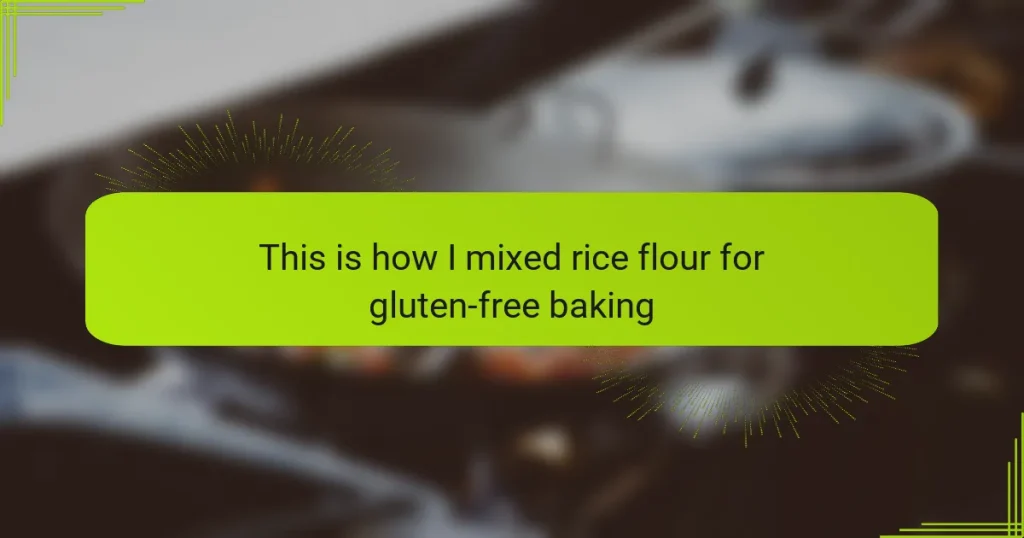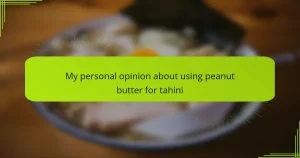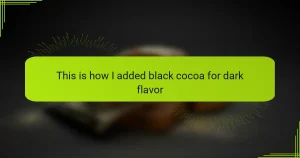Key takeaways
- Rice flour is gluten-free and requires understanding of its texture and moisture absorption for successful baking.
- Gluten-free desserts can be lighter and more inclusive, providing options for those with dietary restrictions while also encouraging creative experimentation with flavors and textures.
- Proper mixing techniques, like sifting and thorough blending with other flours, are essential for achieving desired textures in gluten-free baking.
- A personal rice flour blend, combining white rice flour with tapioca and potato starch, can create tender, well-balanced baked goods when moisture levels are carefully managed.
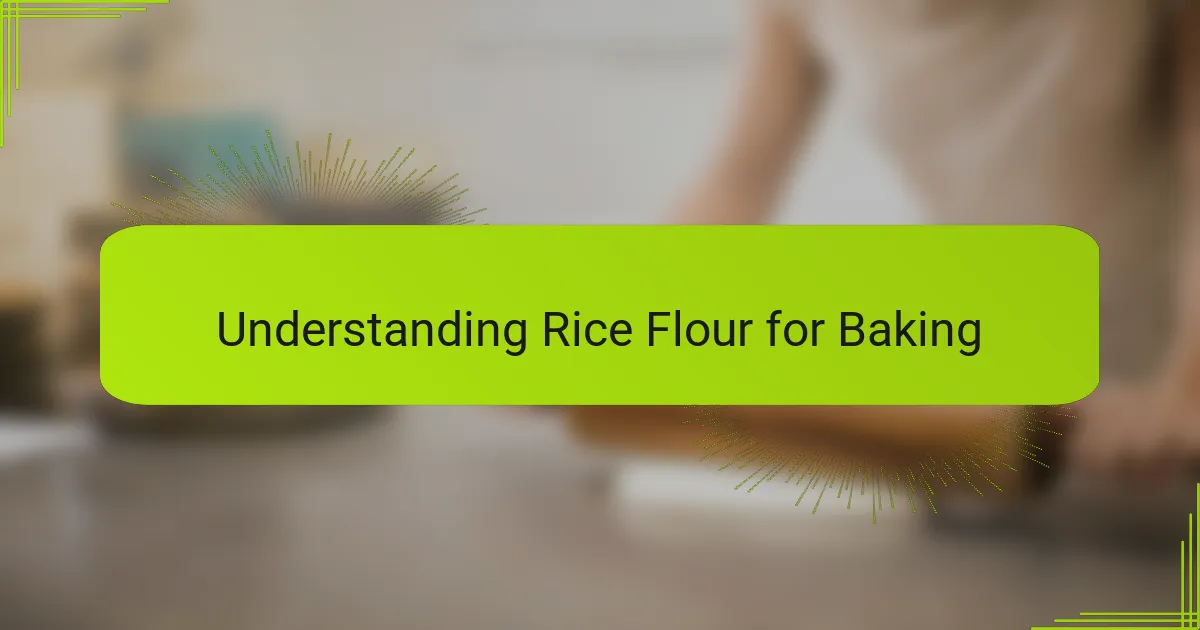
Understanding Rice Flour for Baking
Rice flour has always intrigued me because it’s naturally gluten-free, making it a dream ingredient for allergy-friendly baking. But understanding its texture and behavior in recipes took some trial and error. Have you ever noticed how it feels slightly gritty compared to regular flour? That’s because it’s milled from whole grains of rice, which don’t develop gluten’s stretchy structure.
When I first swapped all-purpose flour for rice flour, I quickly realized it can’t provide the same elasticity needed for certain baked goods. This led me to appreciate its role as a tenderizer rather than a binder. I often blend it with other gluten-free flours or add a binder like xanthan gum to mimic that texture we all crave in cakes and cookies.
What’s fascinating is how rice flour absorbs liquids differently. From my experience, balancing moisture is crucial when mixing it into recipes; too much or too little really changes the result. Understanding this behavior helped me craft desserts that are both soft and light, without the dryness that can sometimes come with gluten-free baking.

Benefits of Gluten-Free Desserts
Gluten-free desserts often get a bad rap for being dry or crumbly, but I’ve found quite the opposite when using rice flour thoughtfully. One of the biggest benefits I appreciate is how these treats sit lighter on the stomach. Have you ever felt weighed down after a heavy dessert? Gluten-free options can feel fresher and more digestible to me, which makes indulging without guilt so much sweeter.
Another perk I enjoy is the inclusivity gluten-free desserts offer. When I bake without gluten, I’m not just considering my health—I’m opening the door for friends or family members with allergies or sensitivities to join in the fun. Honestly, seeing everyone dig into a dessert I made without worrying about gluten feels incredibly rewarding.
Lastly, I love how gluten-free baking pushes creativity. Without the familiar stretch of gluten, I’ve had to explore new flour blends and textures, which turned out to be a delightful challenge. This freedom to experiment often leads me to unexpected flavors and light, tender bites that surprise and please me every time. Who knew going gluten-free would spark so much inspiration?
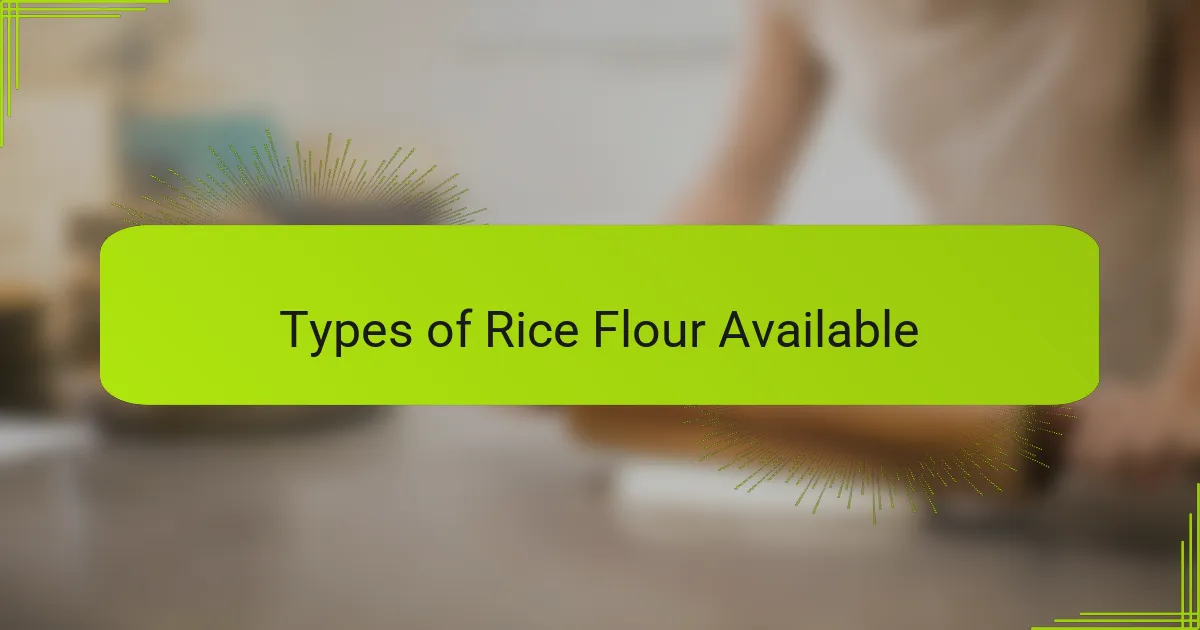
Types of Rice Flour Available
Rice flour comes mainly in two types: white and brown. White rice flour is what I use most often—it’s finely milled from polished rice grains and gives baked goods a light texture. On the other hand, brown rice flour still has the bran layer, which adds nuttiness and a bit more density; I like using it when I want a heartier, more rustic flavor.
Have you ever wondered why some recipes call for specific types of rice flour? From my experience, white rice flour tends to produce a softer crumb, perfect for delicate cakes and cookies. Brown rice flour, being coarser, sometimes requires adjustment in liquid and binding agents, but its flavor can really elevate bread or muffins.
There’s also sweet rice flour, also called glutinous rice flour, though it’s important to remember it contains no gluten. I don’t use it as my base flour because it’s very sticky and dense, but it’s fantastic for chewy textures like mochi or certain frostings. Exploring these variations has truly expanded my idea of what rice flour can do in gluten-free baking.
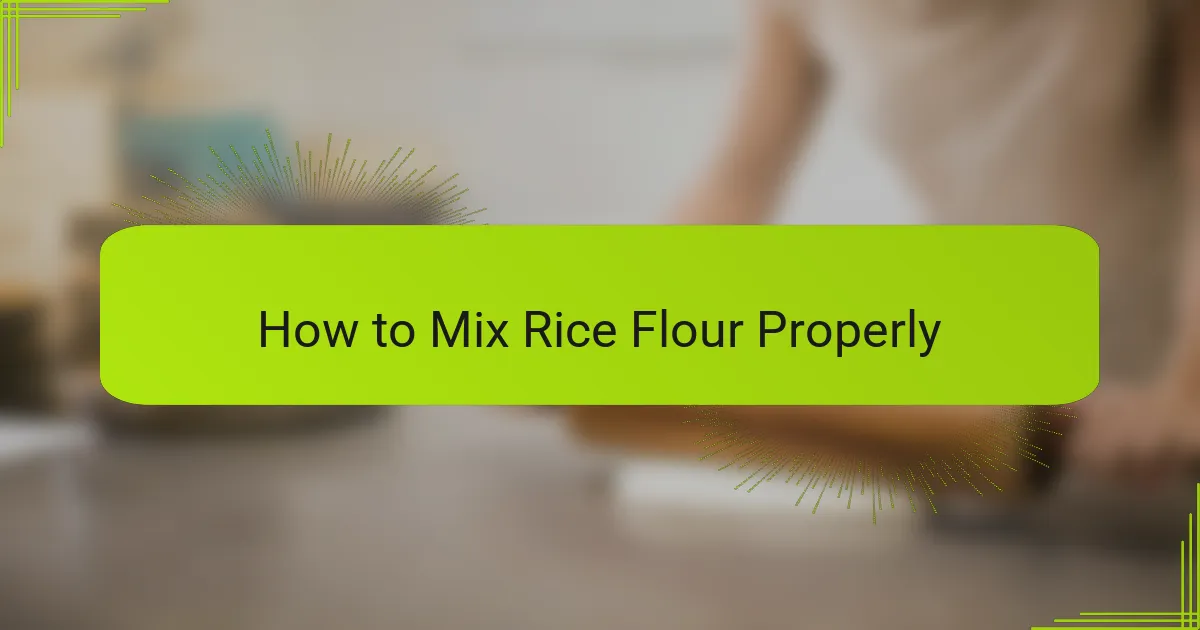
How to Mix Rice Flour Properly
Mixing rice flour properly was an eye-opener for me when I first started gluten-free baking. I learned that simply dumping it into a bowl isn’t enough; sifting the flour before mixing helps break up clumps and creates a smoother batter. Have you ever noticed how uneven lumps can make a cake crumbly or dense? That’s why I always take this extra step now—it’s a small effort that makes a big difference.
Another tip I picked up from experience is combining rice flour with other flours or starches before adding liquids. I usually whisk the dry ingredients together, ensuring they’re evenly distributed, which prevents weird textures later on. It’s like giving the flours a chance to work as a team rather than compete against each other.
One time, I went straight to mixing rice flour with wet ingredients without thorough blending, and the result was disappointing—dry pockets and uneven rise. Since then, I’ve made it a habit to mix gently but thoroughly, often folding in ingredients rather than over-stirring, which keeps the batter light. It’s funny how a small change in mixing technique transformed my baking from hit-or-miss to consistently delicious.

Tips for Perfect Gluten-Free Desserts
Getting the texture right in gluten-free desserts always felt like a bit of a puzzle to me. Have you ever struggled to avoid dryness or crumbliness? I found that adding just the right amount of moisture and a binder like xanthan gum makes all the difference—too much or too little turns your treat into either a soggy mess or a crumbly disappointment.
Another thing I’ve learned is patience during mixing. Rushing the batter usually leads to uneven textures, and I’ve had my share of experimenting with folding techniques to keep things light. It’s fascinating how gentle handling can create that perfect crumb without gluten’s usual stretch.
Lastly, don’t underestimate the power of flavor balancing. Sometimes gluten-free means subtle differences in taste and density, so tweaking your sweeteners or spices is key. I often find that a bit of vanilla or citrus zest can brighten up the final dessert, making it just as satisfying as traditional versions, if not more. Have you tried that in your baking yet?
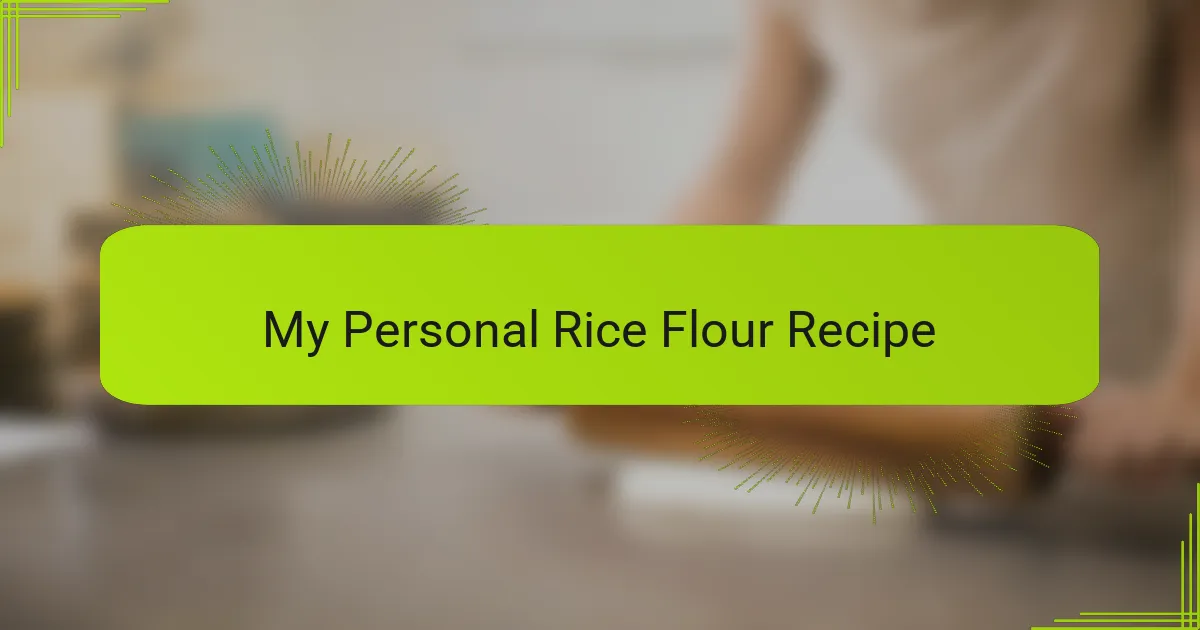
My Personal Rice Flour Recipe
When I first developed my personal rice flour blend, I realized that pure rice flour alone often left my baked goods a little too crumbly for comfort. So, I started mixing it with a small ratio of tapioca starch and a pinch of xanthan gum to recreate that gentle stretch gluten usually provides. Have you ever noticed how just a tiny tweak in the flour mix can completely change the bite? That discovery was a game-changer for me.
Over time, I’ve settled on a ratio of about 70% white rice flour to 20% tapioca starch, with 10% potato starch added for extra softness. This combination feels just right—I get a tender crumb that isn’t dry or overly dense. Sometimes I experiment by swapping in a bit of brown rice flour for nuttiness, but this basic mix is my go-to for cakes and cookies that everyone loves.
What surprises me most is how forgiving this blend can be once you adjust moisture levels properly. I recall one batch where I underestimated liquid, and the result was almost sandy. But now, I pay close attention to hydration, and pairing my rice flour mix with buttermilk or yogurt really lifts the texture. Have you ever played around with adding dairy or plant-based liquids to bring out the best in gluten-free flours? It’s something I recommend trying—it makes a difference you can taste.
